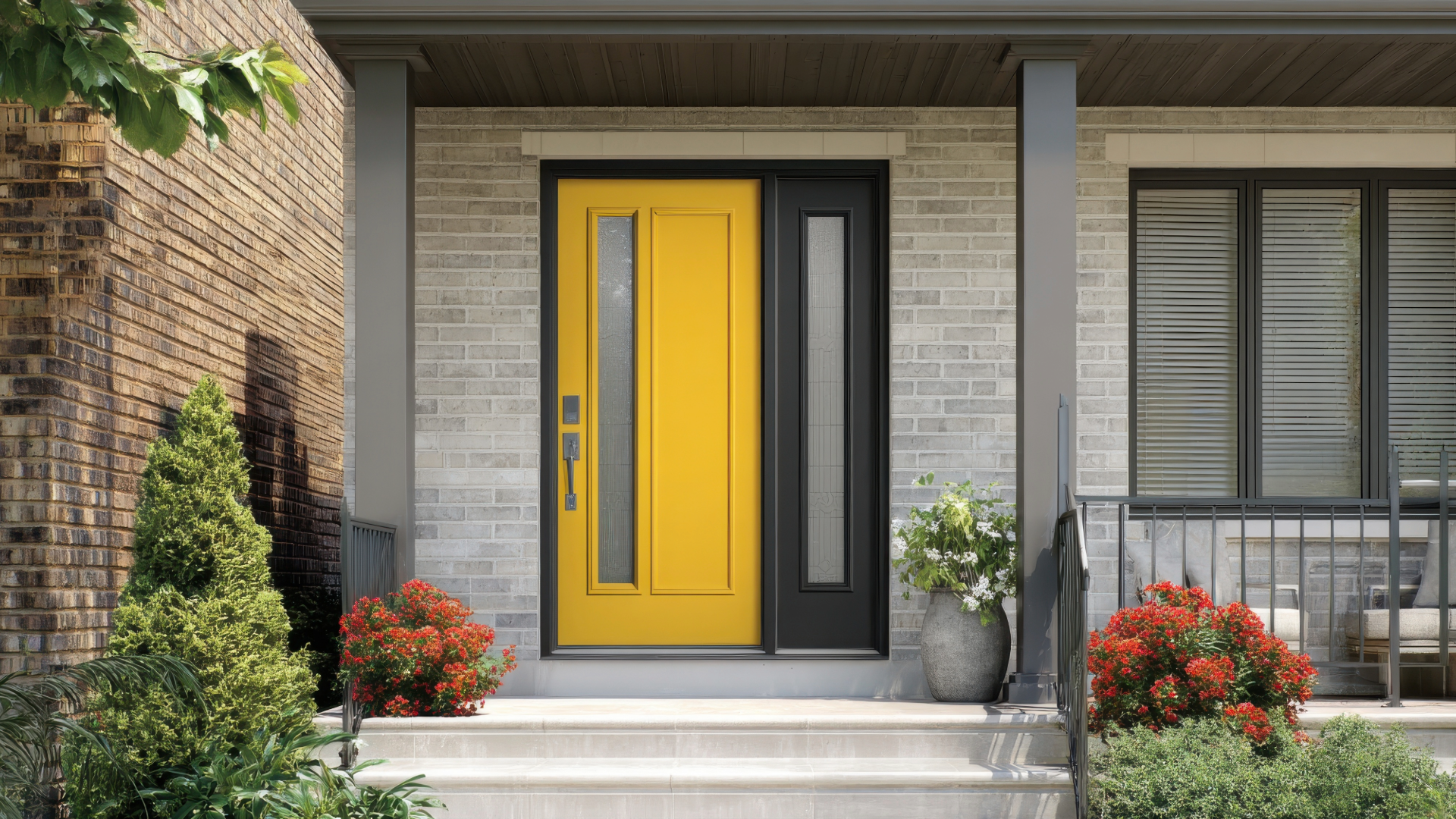Canada’s climate is notorious for its extremes: from blistering winter cold and wind to humid summer heat. When it’s time to replace your front door, your choice of material is one of the most critical decisions you’ll make for your home’s energy efficiency, comfort, and security.
A door for a Canadian home needs to be more than just a beautiful entryway; it must be a fortress against the elements. We break down the Best Types of Doors to Replace Front Entry in Canadian Homes to help you make an informed decision.

Option 1: Fiberglass Doors (The Premium Performer)
Fiberglass doors are widely considered the best overall choice for Canadian homes, offering the perfect blend of performance, durability, and aesthetic flexibility.
| Feature | Performance in Cold Climates |
| Insulation | Excellent. Typically constructed with a high-density polyurethane foam core, providing a high R-value (thermal resistance). |
| Durability | Very High. Highly resistant to warping, swelling, cracking, and rot, even with extreme temperature fluctuations and moisture. |
| Maintenance | Low. Requires only occasional cleaning. Unlike wood, it doesn’t need constant sealing or repainting. |
| Aesthetics | Can be molded to convincingly mimic the texture and appearance of real wood grain or offered in a modern smooth finish. |
The Verdict: If your budget allows, a high-quality, insulated fiberglass door is the top choice for minimal maintenance and maximum energy efficiency against Canadian winters.

Option 2: Steel Doors (The Secure and Affordable Choice)
Steel doors are the most popular and budget-friendly option, providing excellent security and strong insulation when properly constructed.
| Feature | Performance in Cold Climates |
| Insulation | Good to Excellent. Like fiberglass, insulated steel doors feature a foam core and can achieve high energy ratings. |
| Security | Highest. Steel is exceptionally durable and offers the best resistance to forced entry. |
| Maintenance | Low to Moderate. Low day-to-day maintenance, but scratches or dents must be promptly repaired to prevent rust. |
| Aesthetics | Typically offered in smooth, simpler designs, making them ideal for modern or traditional homes. |
Important Note: Because steel is a natural conductor, be sure to choose a model with a thermal break in the construction. This feature minimizes the transfer of cold from the outside skin to the inside, preventing heat loss and condensation.

Option 3: Wood Doors (The Classic Beauty)
While undeniably beautiful and offering unmatched character, wood doors are generally the least suitable material for an exposed entry in a harsh Canadian climate due to their high maintenance requirements
| Feature | Performance in Cold Climates |
| Insulation | Moderate. A solid wood door offers a significantly lower R-value (R-1 to R-3) than foam-filled steel or fiberglass. |
| Durability | Medium. Prone to swelling, shrinking, warping, and cracking in response to seasonal changes in temperature and humidity. |
| Maintenance | High. Requires regular upkeep, including sealing, staining, or painting, to protect it from moisture and UV damage. |
The Verdict: Wood is best suited for homes in milder climates or for entries that are well-protected by a deep overhang or an accompanying storm door. If you want the wood look without the hassle, choose a fiberglass door with a woodgrain texture.
Essential Checklist for Canadian Door Replacement
Choosing the right material is only half the battle. To ensure maximum comfort and savings, look for these critical performance features:
- ENERGY STAR® Certified: This certification confirms the door has been independently tested and meets or exceeds Canada’s technical standards for energy efficiency.
- High R-Value / Low U-factor: These metrics measure insulation quality. Look for a low U-factor (ideally 0.25 or lower) to reduce heat loss.
- Superior Weather Sealing: A tight seal is crucial to stopping drafts. Look for high-quality weatherstripping around the frame and an adjustable threshold at the bottom.
- Multi-Point Locking System: These systems secure the door at multiple points (top, middle, and bottom), which creates a tighter, more uniform seal against the door frame to prevent air leakage.
- Insulated Glass (if applicable): Any glass inserts must be double- or triple-glazed with a Low-E coating and gas-filled for optimal thermal performance.
By prioritizing highly insulated materials like fiberglass and foam-cored steel, and ensuring a tight seal with quality components, you can confidently replace your front entry door with one that will stand up to the toughest weather Canada can throw at it.
